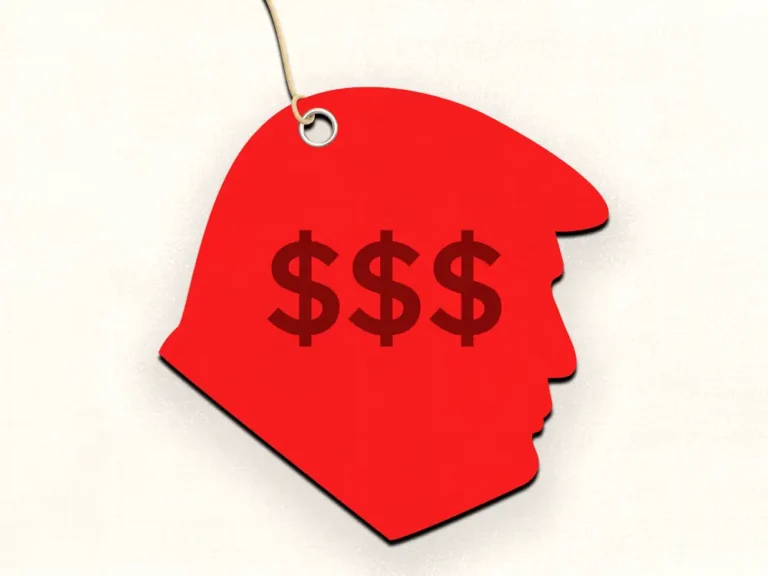30 of the most undervalued, high-quality stocks to buy, according to a fintech firm that uses a quant strategy to filter for cash-generating companies

- Wilton Risenhoover wanted to find a system that did not require high-frequency trading.
- He came up with a quantitative system that filters for growing and cash-generating companies.
- These 30 stocks are considered the most undervalued bets based on Risenhoover’s methodology.
If you’re looking for a quick trade, charts and scanners can help you find it. However, if you intend to hold for the long term, you should look for companies with solid fundamentals and strong balance sheets.
Finding that information, or even knowing where to begin, can be difficult. A quantitative approach is one way to cut through the noise. Models that determine the relationship between variables such as profits and expenses can be used to identify market opportunities.
In 2008, Wilton Risenhoover, founder of the equity-research platform Fintel.io, was pursuing an MBA at the University of California, Los Angeles, when he became interested in academic research on models that could generate stock-market returns.
“I came to the conclusion that there are a lot of these strategies and data that most investors are still ignoring,” Risenhoover said. “And perhaps because it is out of their reach, or perhaps because it requires quantitative analysis that individual investors lack.”
His goal was to find a system that did not require high-frequency trading and could find opportunities using accounting data that was widely available. One of the models he discovered focused on identifying companies that are growing and making money, a method he refers to as the Quality plus Value Scoring Model, or the QuantSoft Score.
He asked Dr. Wesley Gray, CEO and CIO of asset management firm Alpha Architect, to backtest the model in 2014. Gray had recently co-authored a book on quantitative value investing, which influenced much of Risenhoover’s thinking at the time.
Gray and his colleagues put the theory to the test by purchasing the top 75 names generated by the list between July 1, 1992 and December 31, 2013. Based on changes in the list, the stocks were rebalanced monthly. Companies were filtered from small- and mid-cap stocks in the United States, excluding microcaps. Management and transaction costs were not considered in the study.
The results revealed a compound annual growth rate of 20%. Its benchmark, the Russell 2000, had a CAGR of 10.33%.
Despite the fact that the study is over ten years old, Risenhoover claims that the rules of investing have not changed. He believes that healthy, undervalued, cash-generating companies are still good investments.
However, Gray emphasized that value investing has underperformed growth stocks over the last decade, and investors should keep this in mind.
The methodology
To distinguish between good and bad stocks, the model excludes companies with declining revenue, declining net income, net income less than zero, and falling or negative cash flow from operations.
Stocks linked to commodity cycles, such as oil exploration, gas, and mining, are also excluded because their profits are more tied to commodity prices than to company efficiencies. Industrial organic chemicals, on the other hand, are included.
“If oil prices had risen over the last three years, all of these oil companies would have risen to the top because profits would be high, but it’s a boom-bust cycle.” “You’ll be at the end of the cycle, and then prices will fall,” Risenhoover predicted.
The listed stocks have the highest operating-income yields, which are calculated by dividing operating income, or earnings before income and taxes (EBIT), by total enterprise value (EBIT/TEV). Earnings yield, measured as earnings-to-price, is a more common and very similar ratio (the famous P/E is the inversion of E/P). According to Gray, the higher a company’s EBIT/TEV ratio, the better for a shareholder because it may indicate that it is undervalued. However, this is not always the case: a stock with a high EBIT/TEV ratio can still be considered overpriced if its fundamentals are poor.
As a result, the stocks are compared to their three-year historical data. The names are then ranked using two types of 100-point scores:
- A value score calculated by dividing the previous year’s average EBIT by the current TEV.
- A quality score based on three years of revenue growth, three years of average operating cash return on invested capital (OCROIC), and three years of change in OCROIC.
Regardless of the data filters, investors must exercise caution when reviewing the list. Risenhoover described it as “just a starting point.” The study showed that buying the top 75 companies mindlessly over 30 years outperformed the market, but not all stocks performed well, he noted.
Furthermore, the list does not take into account price momentum, so there is no way to predict whether or not these stocks will turn around and begin to rise in price, according to Risenhoover. As a result, investors must understand that this is a long-term strategy.
“So what I’ve found frequently is that I’ve bought a company that ranked first on this list, and I’ve watched its value decline for another six months before it turns around,” Risenhoover explained. “And that can be difficult to swallow. It doesn’t mean it’s a bad choice; it just means the time frame is longer than many people can stomach.”
Gray and his colleagues did not conduct a set-it-and-forget-it study. The results were based on the list being rebalanced monthly.
Risenhoover suggests looking at the stock’s chart and price action to see if you’re comfortable with it. Some of these stocks may be losing value, but they are listed because they have reached a point where they are attractive, he says.
Furthermore, when two or three companies from the same industry appear on the list, it could indicate that the entire industry or sector is out of favor, or that they are sympathy plays, according to Risenhoover. It could be temporary at times, or it could be the result of long-term thematic changes, such as the shift away from coal and toward clean energy.
The following is a list of 30 stocks taken from Fintel.io. Each stock has a quality and value score. Unlike the study, which focused on small and mid-cap companies, this list is not filtered by market capitalization.






